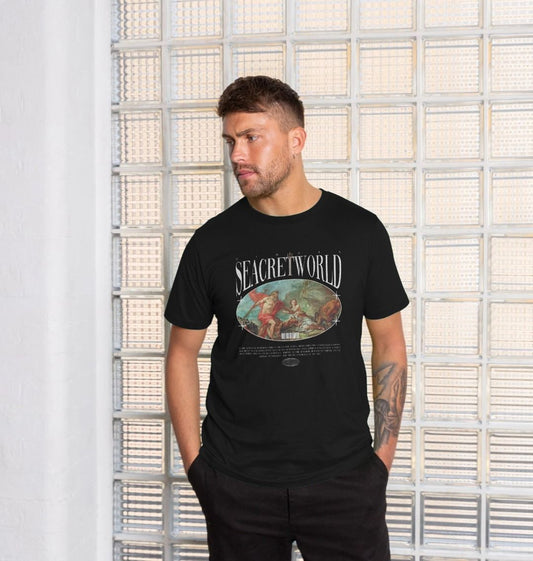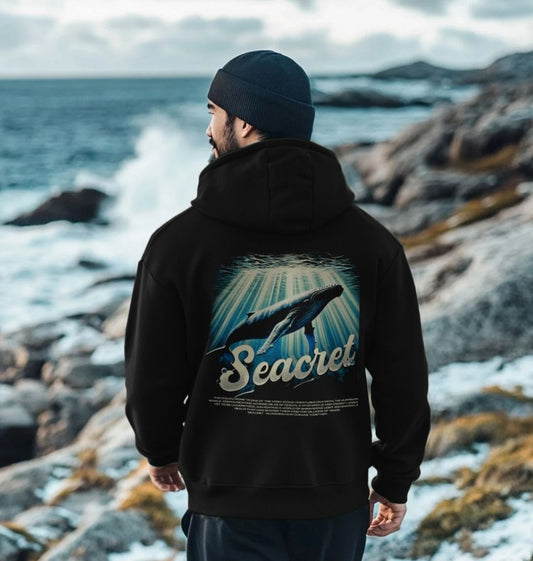The Longevity of Humpback Whales: How Long Can They Live For?
Humpback whales cannot be overstated. With their acrobatic breaches, haunting songs, and gentle nature, these marine mammals have captured the hearts of many. But beyond their beauty lies a question that has intrigued researchers and ocean lovers: how long do Humpback whales live for? Various studies suggest that humpback whales have a lifespan that can vary from 45 to 50 years, with some individuals even living up to 80 or 90 years.
Understanding the longevity of humpback whales involves diving deep into the intricacies of their biology, their environmental challenges like ocean pollution, climate change, and their migratory behaviours, which span across vast oceans. In this blog post, we will explore the lifespan of humpback whales, the factors influencing their longevity, and the challenges they face in today’s rapidly changing oceanic landscape.
The Lifespan of Humpback Whales
Humpback whales (Megaptera novaeangliae) are known for their lengthy lives, although the exact age of a whale can be difficult to know. Scientists primarily use two methods to determine the age of these cetaceans:
1. Earwax Buildup: A humpback whale produces earwax over its lifetime, which accumulates in layers. Analysing these layers provides insights into the age of the whale, similar to counting tree rings.
2. Photographic Identifications: Researchers often utilise photos of pectoral fins and flukes for identifying individual whales and track their lifespans through sightings over the years. According to the latest marine biology research, it is reported that the oldest known humpback whale was found to be approximately 95 years old, showcasing their potential for a lengthy existence in the oceans. A possible contributing factor to their age and size can be linked to the cold feeding grounds. Which will incur slower metabolic rates and highly nutrient rich waters. This cold water nutrient rich gigantism can often be seen in a variety of Antarctic species, including crabs.
Environmental Factors Influencing Longevity
Longevity in humpback whales, as with many other species, is influenced by various factors, including:
1. Diet: Humpbacks primarily feed on small fish and krill. An abundant food supply contributes to healthier and longer lives.
2. Habitat: Their migration patterns take them between rich feeding grounds in the North Pacific Ocean and breeding areas in tropical waters. The health of these ecosystems directly affects their survival and longevity.
3. Climate Change: Rising ocean temperatures, changes in salinity, and ocean acidity are significant factors that influence which areas are hospitable for humpbacks. An increase in ocean acidification can lead to declines in the populations of krill and other prey, adversely affecting whale health.
4. Human Impacts: Polluting oceans poses a grave threat to humpback whales. Entanglement in fishing gear, ship strikes, and noise pollution can drastically affect their life expectancy. During my time in the Whitsundays I have seen first hand a humpback whale entangled in fishing gear and ropes.
The Role of Migration in Longevity
Humpback whales are known for their extensive migratory patterns which can stretch thousands of miles. During this migration, they travel from nutrient-rich feeding grounds in colder waters to warmer breeding grounds. This migration can be one of the longest of any marine mammal, and it plays a significant role in their lifespan by ensuring they have access to diverse habitats and food sources. Their migratory routes may take them through different oceanic zones, including the North Atlantic Ocean, South Pacific Ocean, and various other regions like the Arctic Ocean and Indian Ocean. The availability of nutrient-rich waters is essential not just for feeding but also for maintaining their health as they grow older.Threats to Humpback Whales
Despite their potential for longevity, humpback whales are facing numerous threats that could shorten their lives:
1. Whaling: Historically subjected to commercial whaling, populations are still recovering from their population declines. Although whaling has been banned in many areas, there are still illegal hunting practices in some regions. Moist common and well known whaling in this day and age are those of the Faroe islands whaling Sea Shepherd drive a lot of attention to the Faroe islands whaling's and how inhumane it is.
2. Marine Debris: Ocean plastics and other debris pose ingestion and entanglement hazards. Ingested debris can lead to nutritional deficiencies or digestive obstructions.
3. Climate Change: Affecting their migratory patterns, prey availability and the general health of ocean ecosystems. The implications of global warming extends to sea-level rises and changes in ocean circulation that can impact feeding grounds critical to their survival.
4. Noise Pollution: Increased shipping traffic and underwater construction have elevated noise levels in waters inhabited by humpbacks, which rely on vocalisations for communication and navigation.
To combat these threats, organisations like the Ocean Cleanup Foundation and our partners CleanHub are working on projects dedicated to removing floating plastics from the ocean. Additionally, initiatives focused on marine conservation are critical for not only protecting whales but also the entirety of the marine ecosystems.
Efforts in Whale Conservation
With the understanding of the threats facing humpback whales, many marine conservation groups and researchers are implementing various strategies to help protect these cetaceans:
1. Monitoring Programs: Extensive research and monitoring efforts are essential to keep track of whale populations, migratory patterns, and health.
2. Pollution Control: Efforts aimed at reducing land-based pollution entering the ocean, protection legislation in ecosystems like the Great Barrier Reef, and plans for reducing microplastics in the ocean are crucial.
3. Public Awareness: Campaigns aimed at educating the public on the importance of ocean protection initiatives and sustainable practices can contribute significantly to marine conservation efforts.
4. Habitat Protection: Designating marine protected areas and sanctuaries allows whales a safe environment to thrive. Ensuring robust regulations can prevent overfishing and safeguard essential habitats like mangrove trees and coral reefs.
By fostering partnerships between governments, NGOs, and local communities, a collective approach can create effective action plans for ocean cleaning projects and the safeguarding of marine wildlife.
The Future of Humpback Whale Longevity
The future of humpback whale longevity looks promising, but collective efforts must be amplified globally to ensure their survival for decades to come. The role humans play in maintaining the health of the ocean is critical, as is acknowledgment and action against human-induced threats. The responsibilities of individuals range from participating in beach cleanups to advocating for policies that support sustainable fishing and ocean conservation. Research and environmental stewardship will determine the narrative of how humpback whales will thrive in future ecosystems.
In conclusion, the longevity of humpback whales is not solely dependent on nature and biology, but an intricate balance between their environment, human activity, and global change. Through continued awareness, collaboration, and dedication to marine science, we can protect these beautiful animals and improve their chances of living long, healthy lives.
For further information, consider exploring resources from established organisations like : National Oceanic and Atmospheric Administration (NOAA) or the World Wildlife Fund (WWF). With dedicated efforts to better understand and protect marine mammals, we can pave the way for a brighter future for both humpback whales and the oceans they inhabit.
Related Reading
4. Travel Tips
Shop Seacret
Head over to our sustainable store, all our apparel is designed for ocean lovers and ocean themed. Help us grow and hit our impact goals by joining our fast growing community and wear what you love. Shop Now









